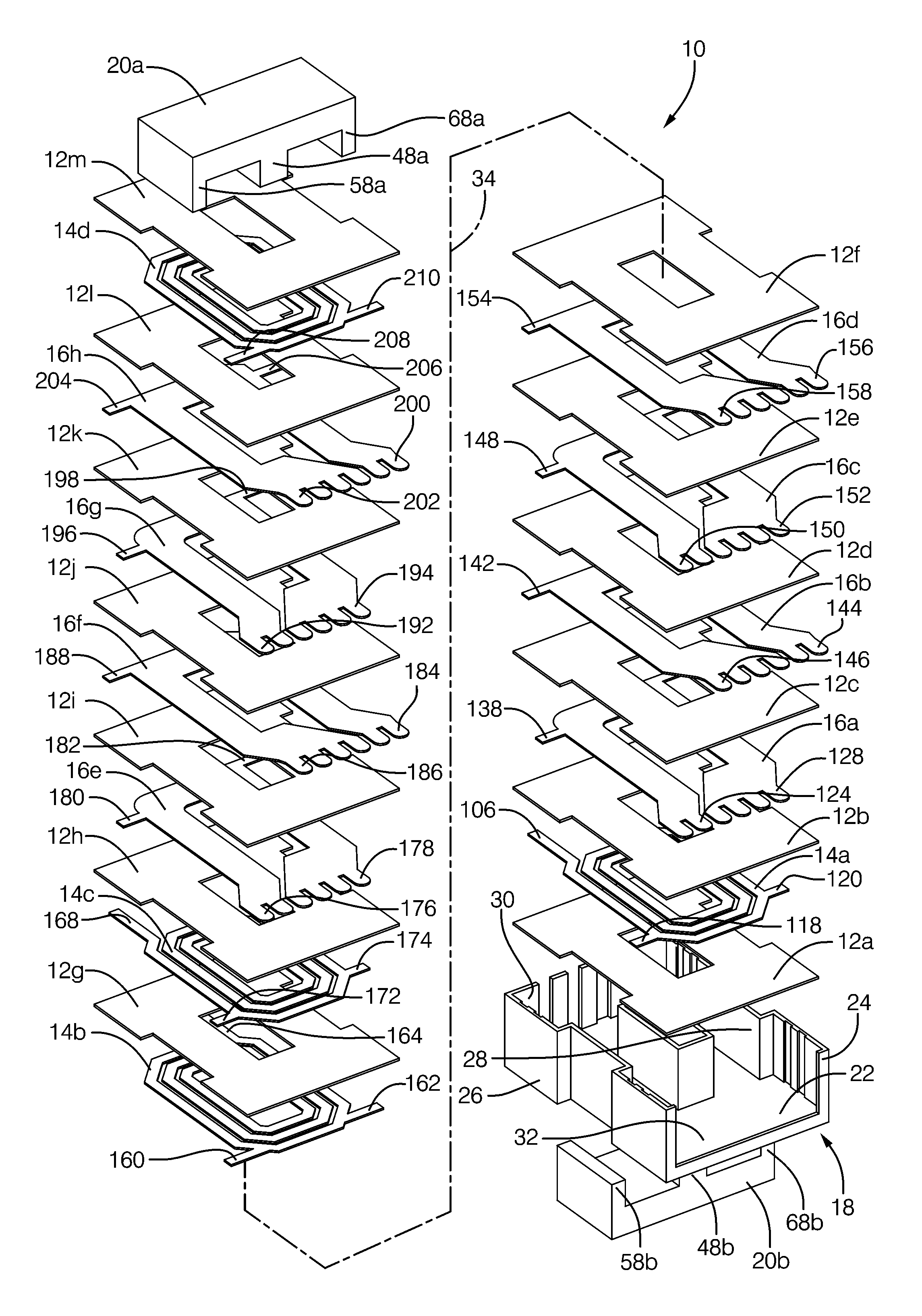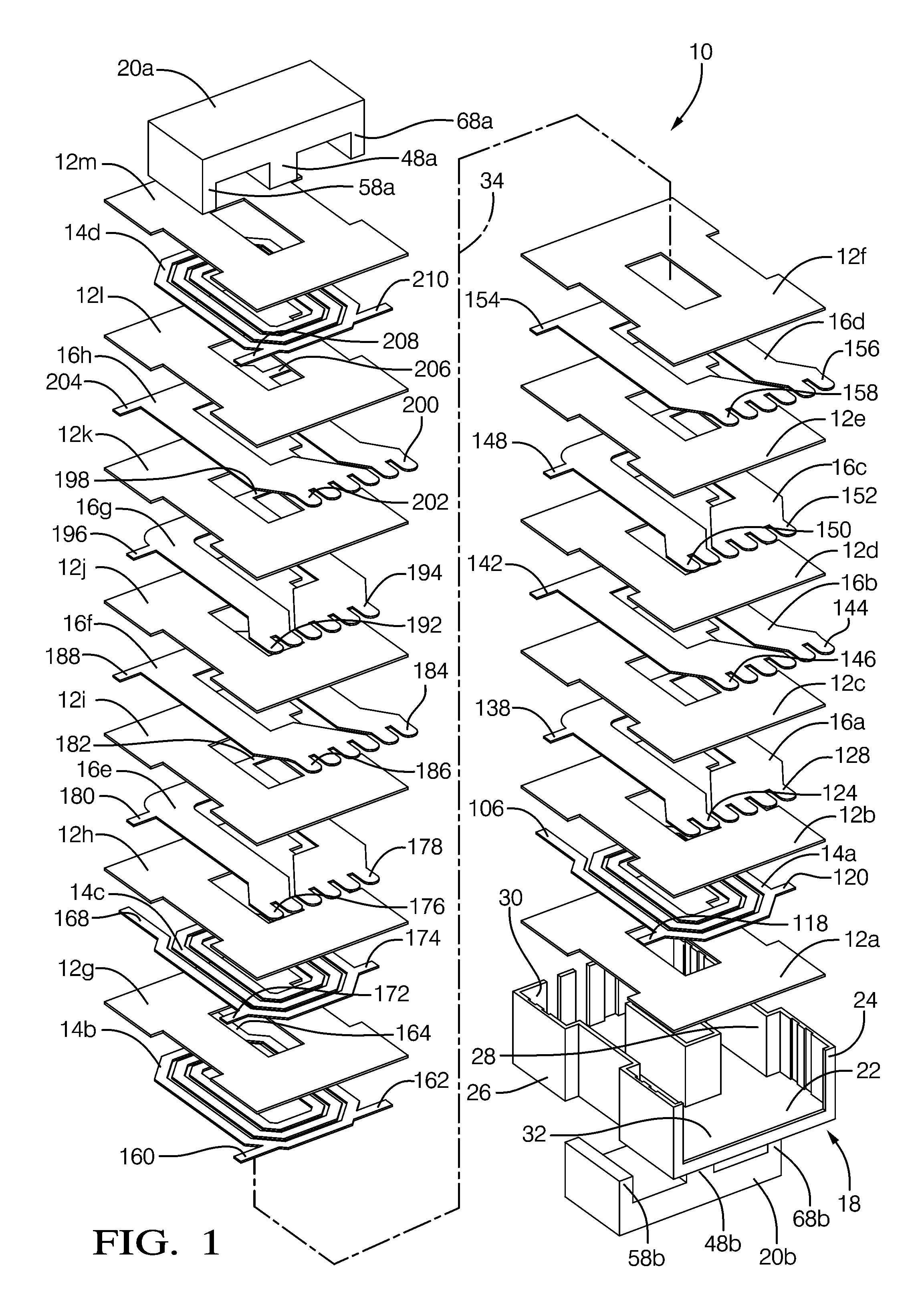Planar magnetic structure
a technology of planar magnetic structure and planar magnetic structure, which is applied in the direction of transformer/inductance details, magnetic bodies, electrical devices, etc., can solve the problems of disadvantageous use of bobbins, inability to meet the requirements of assembly cooling, so as to improve the cooling capability of the assembly and reduce the leakage inductance
- Summary
- Abstract
- Description
- Claims
- Application Information
AI Technical Summary
Benefits of technology
Problems solved by technology
Method used
Image
Examples
Embodiment Construction
[0025]Magnetic parts generally utilize some form of coil forming structure. On large utility type of transformers they are usually called coil formers. For smaller parts they are called bobbins. In many bobbins, pins are inserted to provide an electrical termination for the magnet wire. For larger planar magnetic transformers and inductors they may be configured more like buckets. Sometimes the high voltage windings are enclosed in an envelope structure for isolation purposes. In the present invention, the term “carrier” is intended to describe all such similarly functioning structures.
[0026]One of the challenges in transformer and inductor design is to maximize the core window copper fill and, at the same time, providing the proper insulating spacing for voltage isolation. One of the more effective approaches used with large planar parts is to surround (envelop) the high voltage windings with a plastic isolator structure. This approach increases the parasitic leakage inductance by ...
PUM
| Property | Measurement | Unit |
|---|---|---|
| thickness | aaaaa | aaaaa |
| creepage distance | aaaaa | aaaaa |
| distance | aaaaa | aaaaa |
Abstract
Description
Claims
Application Information
 Login to View More
Login to View More - R&D
- Intellectual Property
- Life Sciences
- Materials
- Tech Scout
- Unparalleled Data Quality
- Higher Quality Content
- 60% Fewer Hallucinations
Browse by: Latest US Patents, China's latest patents, Technical Efficacy Thesaurus, Application Domain, Technology Topic, Popular Technical Reports.
© 2025 PatSnap. All rights reserved.Legal|Privacy policy|Modern Slavery Act Transparency Statement|Sitemap|About US| Contact US: help@patsnap.com



